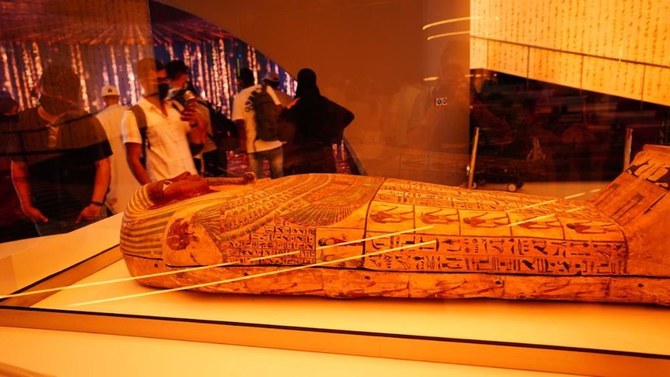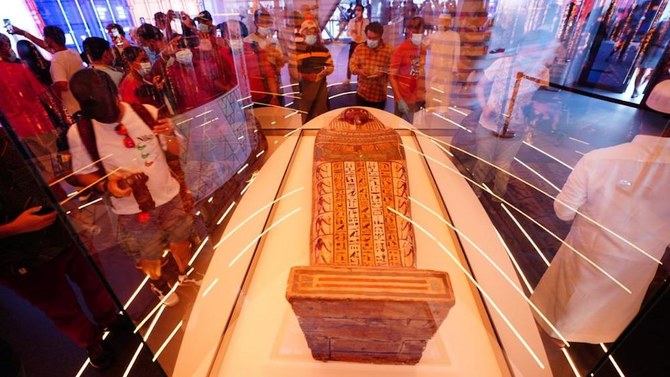DUBAI: The Egypt pavilion has proved, unsurprisingly, a major attraction of Expo 2020 Dubai. Since the inception of World Expos in the 19th century, the country has consistently taken part in the event, attending as a marquee participant in the 1851 Great Exhibition in London.
Egypt’s pavilions and displays at previous World Expos have historically been among the most popular and prominent, often focused on the nation’s agricultural and industrial growth as well as its rich history.
For instance, one guidebook from the 1851 show mentions “a fine exhibit of Egypt’s chemical products.” Then, between 1876 and 1904, Egypt used World Expos to stimulate interest in its cotton industry and the infrastructure that supported it, such as bridges and railroads.
But above all, Egypt has always been ahead of the game in developing an experiential format for World Expos, adding sensory richness and a feeling of “being there” to its displays.
Again, looking back to 1851, one commentator noted: “The Egyptian exhibit was one of the larger exhibits … its entrance consisted of an arch suggesting entry into an ancient Egyptian temple.”
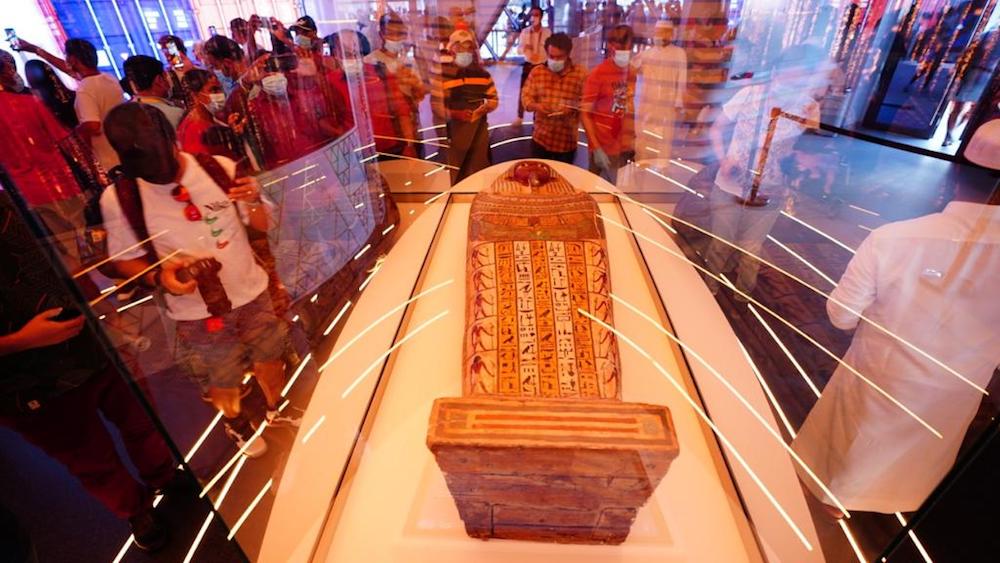
Since the inception of World Expos in the 19th century, Egypt has consistently taken part in the event, and always been a major attraction. Dubai 2020 is no different. (AFP)
Similarly, media reports from the St. Louis World’s Fair of 1904 said: “The greatest attraction of all, undoubtedly, is the ‘Streets of Cairo’ with its 180 men, women and children, theaters, camels, donkeys, and dogs.”
Little of this showmanship has been lost in the decades since. At Expo 2020 Dubai, Egypt again used its pavilion to showcase its national story, while carefully curating an ambitious vision for its future.
Designed by Egyptian architect Hazem Hamada, the pavilion covers 3,000 square meters and combines the authenticity of Egypt’s remarkable history while simultaneously highlighting its ambitious Vision 2030 agenda.
The four-story pavilion has a prime location close to Morocco and Saudi Arabia in the Opportunity District. In a nod to its heritage, the building is imprinted with hieroglyphics, while three sharp angles near the entrance are indicative of its iconic pyramids.
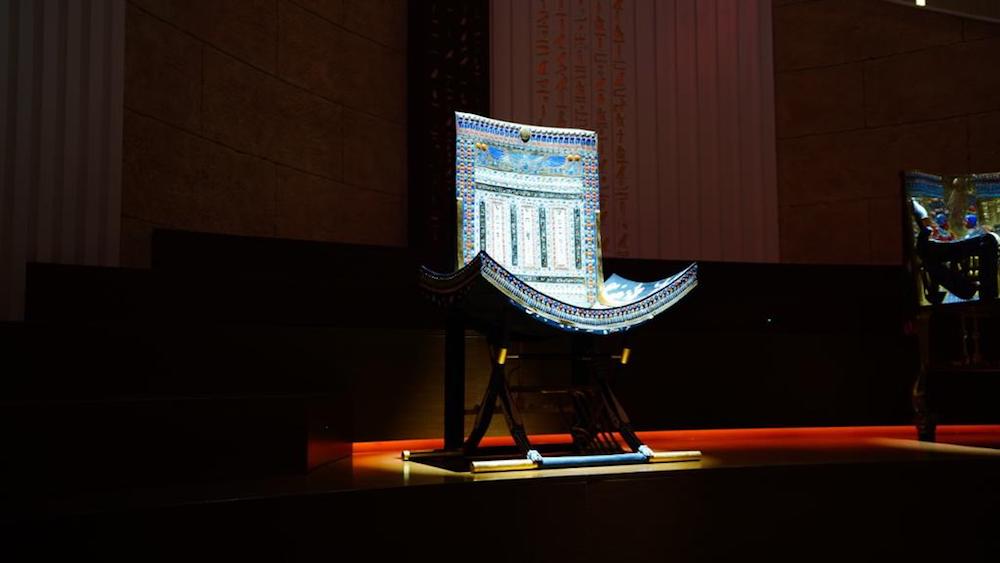
Designed by Egyptian architect Hazem Hamada, the pavilion covers 3,000 square meters and combines the authenticity of Egypt’s remarkable history. (AFP)
The structure stands in stark contrast to its neighbor Switzerland, whose pavilion is a mix of steel, cubic architecture, and a mirrored facade — old and new, standing side by side, each bold and unique in their own way.
Upon entering the Egyptian pavilion, visitors are taken through a 15-minute guided tour of a series of displays drawing on the key moments of Egyptian history. Visitors are both guided by a “real life” host and welcomed by a virtual guide, highlighting Egypt’s duality of authenticity and modernity.
The opening display welcomes visitors in music and cascading projections of golden hieroglyphics that flow down the walls like rain. Alongside these digital manifestations of modernity are the famed artifacts of Egypt’s past.
One notable exhibit is the sarcophagus of the priest Psammitic, son of Pediosit, recently discovered in the archaeological dig sites of Saqqara. An instantly recognizable replica of King Tutankhamun’s golden funerary mask is accompanied by replicas of three of his sarcophagi.
FASTFACT
* 3,000sqm - Area of the Egypt pavilion at Expo 2020 Dubai, standing at 19m in height & spread across 4 levels.
* 3 - Original antique Pharaoh statues on display, offering a glimpse of what’s in store at the Grand Egyptian Museum.
* 4,000 - Years of trade & innovation attached to Egypt’s name — a unique brand to attract new investment.
These pieces offer visitors a tantalizing glimpse of things to come when Cairo’s much-anticipated Grand Egyptian Museum finally opens its doors, where the largest collection of Tutankhamen relics will be put on display together — several for the first time since their discovery.
As with Egypt’s previous World Expo forays, the 2020 pavilion is carefully balanced to leave not only a lasting cultural impact but also to convey a bigger message.
Several displays emphasize Egypt’s Vision 2030 agenda and the range of sustainable development opportunities it has to offer. Organizers are keen to present Egypt as a favorable investment destination connecting the world to the African continent.
The Suez Canal Economic Zone, Egypt’s smart cities, and its tourism developments are just a few of the nation’s investment vehicles of choice.
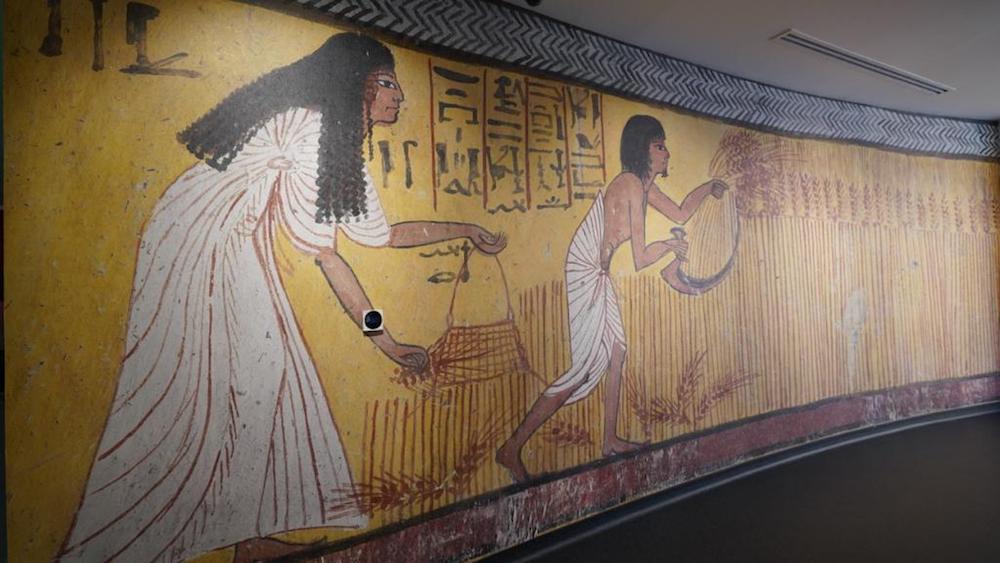
The pavilion’s “finale” brings everything together in a digital collage of art, music, and dance, combining tradition with vision, old with new. (AFP)
By telling the story of its ancient civilization, the Egyptian pavilion’s message to investors is this: Let history be our guide. With some 4,000 years of innovation and trade attached to its name, Egypt can argue its vision is built upon raw experience.
The pavilion’s “finale” brings everything together in a digital collage of art, music, and dance, combining tradition with vision, old with new, water with desert, green landscapes with blue oceans, and modern trade with ancient crafts. It is a bold, unique, engaging, and impressive display.
Throughout the six months of Expo 2020 Dubai, the Egyptian pavilion will host important figures from science, sport, the arts, and culture. It is staging more than a hundred events on topics ranging from urban development and tourism to sustainable development, agriculture, and quality of life for women and young people.
In addition, it is hosting nine exhibitions on antiquities, education, real estate, and investment, which will feature workshops, seminars, networking events, and cultural salons.
Given its long and proud history of World Expos, it is scarcely surprising that Egypt’s organizing committee knows how to draw a crowd. And with such a jam-packed program of events on offer, it will no doubt build on this well-earned reputation, in this and many World Expos to come.


